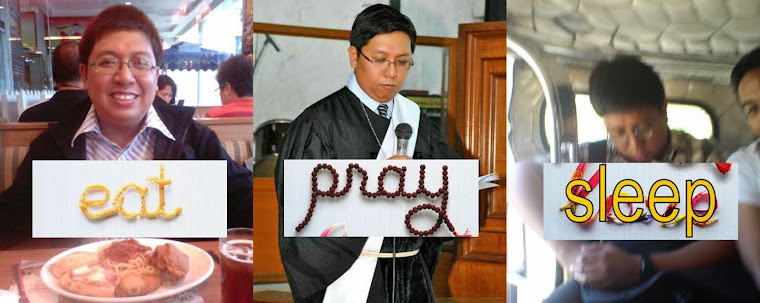I am a connoisseur of unusual
tech. Rather than going for the latest gadgets, I go for the more offbeat ones.
I earlier wrote a review on the Cherry Mobile P9 "Cutie",
which never failed to serve as a conversation piece. Another one of my technological
conversational pieces is the Da Peng T2000. It's a Chinese-made phone with an
unusual twist: it is an iPhone clone that attaches to a leather case with a
built-in keyboard! I bet owners of the real iPhone wished that their
high-priced units had that.
I first encountered this hybrid wonder when I was once riding on a bus. A man beside me whipped out his phone and to my astonishment, it appeared to be an iPhone attached to a QWERTY keyboard. Whoa, that's so cool! I thought. And I promised myself to buy myself one. After some time, I was finally able to buy one from a gadgets bazaar somewhere in Alabang.
The phone served me for a
time until the touch screen went awry; so I sent it into retirement. Recently, I
was tempted to buy a seven-inch 3G Android tablet to serve as an on-the-road
e-book reader and Internet access device; but I had to cut down on my expenses.
So I decided to have my T2000 repaired and bring it back to active duty. So I
took it to a technician to recalibrate the touch screen, and the phone got a
new lease on life.
Specifications (Courtesy of SourcingGate.com)
GSM Compatibility: Frequencies 850MHZ, 900MHz, 1800MHz, 1900MHZ.
Language: English, French, Spanish, Danish, Polish, Portuguese, Italian, German, Bahasa Melayu, Bahasa Indonesia, Czech, Norwegian, Slovak, Dutch, Finnish, Hungarian, Vietnamese, Turkish, Russian, Bulgarian, Arabic, Persian, Hebrew, Greek, Swedish, Croatian, Romanian, Slovenian, Simplified Chinese, Traditional Chinese
Screen: 3.2 inch, HVGA high vivid touch screen, 480*320 pixels
SIM Card Slots: 2 Card Slots
SIM Card Modes: Dual SIM open, Only SIM1 open, Only SIM2 open, Flight Mode
Security Settings: Phone lock, Auto Keypad lock, Change password
Camera: 3.0 megapixel camera, supports video-shoot, the duration depends on storage
Audio Player: Built-in
Ring tone: supports MP3 audio record as ring tone
User Profiles: General, Meeting, Outdoor, Indoor, Headset, Bluetooth
Memory: Support TF Card Slot.
Vibration: Support
GPRS Support: Browse WAP Website
Messaging: SMS, MMS, Chat
Games: Built-in Funny Games
E-Book Reader: TXT
JAVA Support: JAVA 2.0
Bluetooth Support: Bluetooth 2.0
Power Source: Built in Rechargeable Li-ion Battery
Shape: Bar Phone
Color: Black
Screen: 3.2 inch, HVGA high vivid touch screen, 480*320 pixels
SIM Card Slots: 2 Card Slots
SIM Card Modes: Dual SIM open, Only SIM1 open, Only SIM2 open, Flight Mode
Security Settings: Phone lock, Auto Keypad lock, Change password
Camera: 3.0 megapixel camera, supports video-shoot, the duration depends on storage
Audio Player: Built-in
Ring tone: supports MP3 audio record as ring tone
User Profiles: General, Meeting, Outdoor, Indoor, Headset, Bluetooth
Memory: Support TF Card Slot.
Vibration: Support
GPRS Support: Browse WAP Website
Messaging: SMS, MMS, Chat
Games: Built-in Funny Games
E-Book Reader: TXT
JAVA Support: JAVA 2.0
Bluetooth Support: Bluetooth 2.0
Power Source: Built in Rechargeable Li-ion Battery
Shape: Bar Phone
Color: Black
Multimedia:
- Camera, Image Viewer, Video recorder, Video Player,
- Audio Player, Sound recorder, FM Radio, Slide Show
File formats:
- Music: MP3, MIDI, AMR, WAV…
- Image: GIF, JPG…
- Video: 3GP, MP4…
- E-Book: TXT…
TV Function:
- Type: Analog
- My Channel, Channel Search, Area Setting, Add to My Channel
- Record Function: Yes
- TV Record Format: 3GP
Digital Still Camera:
- Image Quality: High, Normal, Low
- Snapshot Options: Delay Timer, Continuous Shot
- Picture Settings: Effects, White Balance
- EV: 8 steps (+4 to -4)
Video recorder:
- Video Record Format: 3GP
- Video Quality: Normal, Low, High
- Video Settings: Effects, White Balance
- EV: 8 steps (+4 to -4)
Sound recorder:
- Format: AMR, WAV
- Sound quality: Low, High
Audio Player:
- Formats: MP3, WAV
- Settings: Storage, Repeat, Shuffle, Lyrics,
FM Radio:
- Radio FM Tuner Frequency: 87.5MHz to 108MHz
- Background Play: ON, OFF
- Loudspeakers: ON, OFF
Bluetooth:
- Type: MTK BT DEVICE
- Supported Service Profiles: Handsfree, Headset
- Options: Power, Inquiry Audio Device, My Device, Active Devices, Settings
Battery Life:
- Talk Time: Up to 3.5 hours
- Music Play: Up to 7 hours
- Standby Time: 200 to 400 hours
Personal Organizer:
- Calculator, Calendar, Alarm Clock, World Clock
- Stopwatch, Mobile QQ, Currency converter, E-book reader and Notepad.
- Camera, Image Viewer, Video recorder, Video Player,
- Audio Player, Sound recorder, FM Radio, Slide Show
File formats:
- Music: MP3, MIDI, AMR, WAV…
- Image: GIF, JPG…
- Video: 3GP, MP4…
- E-Book: TXT…
TV Function:
- Type: Analog
- My Channel, Channel Search, Area Setting, Add to My Channel
- Record Function: Yes
- TV Record Format: 3GP
Digital Still Camera:
- Image Quality: High, Normal, Low
- Snapshot Options: Delay Timer, Continuous Shot
- Picture Settings: Effects, White Balance
- EV: 8 steps (+4 to -4)
Video recorder:
- Video Record Format: 3GP
- Video Quality: Normal, Low, High
- Video Settings: Effects, White Balance
- EV: 8 steps (+4 to -4)
Sound recorder:
- Format: AMR, WAV
- Sound quality: Low, High
Audio Player:
- Formats: MP3, WAV
- Settings: Storage, Repeat, Shuffle, Lyrics,
FM Radio:
- Radio FM Tuner Frequency: 87.5MHz to 108MHz
- Background Play: ON, OFF
- Loudspeakers: ON, OFF
Bluetooth:
- Type: MTK BT DEVICE
- Supported Service Profiles: Handsfree, Headset
- Options: Power, Inquiry Audio Device, My Device, Active Devices, Settings
Battery Life:
- Talk Time: Up to 3.5 hours
- Music Play: Up to 7 hours
- Standby Time: 200 to 400 hours
Personal Organizer:
- Calculator, Calendar, Alarm Clock, World Clock
- Stopwatch, Mobile QQ, Currency converter, E-book reader and Notepad.
Package Content:
• 1 x DaPeng T2000 Phone
• 2 x Standard Rechargeable Battery
• 1 x Travel Charger
• 1 x USB (to mini-USB) cable
• 1 x User’s Manual
• 1 x Wired Earphones with MIC and Clip
• 1 x DaPeng T2000 Phone
• 2 x Standard Rechargeable Battery
• 1 x Travel Charger
• 1 x USB (to mini-USB) cable
• 1 x User’s Manual
• 1 x Wired Earphones with MIC and Clip
 |
| The iPhone clone phone unit. Note the connectors on the right side of the phone. |
The Da Peng T2000 phone unit is
a clone of the famous Apple product, with a 3.2 inch touch screen with a round
"back" button below. On the top edge is the loud speaker, 3.5 mm
audio jack and a telescoping television antenna (yes, this iPhone has analog TV!).
On the left side is the USB port (compatible with Samsung's data cable) and the
on/off switch. A telescoping stylus can be pulled out from the bottom.
 |
| Have you seen an iPhone with a TV antenna...? |
 |
| ...and a stylus? |
The leather case has a docking
cradle where the phone is attached by snapping it in. A set of pins inside the
cradle connect to contacts on the right side of the phone (when it is upright).
These contacts apparently carry data and power--the keyboard does not use a
separate power source (which may not be possible if this is a Bluetooth keyboard).
The buttons on the keyboard are big--perfect for a guy with fat thumbs like me!
 |
| The leather case/keyboard (above) and the phone unit (below). |
 |
| The phone unit snaps on to the keyboard easily. |
Just like other "China
phones", the T2000 is a dual-SIM, dual-standby phone (where can you see an
iPhone where you can insert two SIM cards?). It has analog TV (Beat that,
Apple!), a FM radio tuner, an MP3 player, and a memory card slot (expandable up
to 2 GB, the specs say; but I have a 4GB card inserted and it's working fine).
It has an e-book reader where I can read my favorite downloaded books (albeit
only in .txt format) so I can study or read on the road.
The T2000 is an Internet
phone. It can connect to the World Wide Web via GPRS or WiFi. Besides its
native browser, one can surf using third-party browsers like Opera Mini or QQ
Browser. Whether I am using a Smart or Globe data plan, browsing is reasonably
fast. I usually use a pay-per megabyte bundle; and thanks to the mobile
browsers' data-compression tchnology, a cheap plan can last me a whole day.
However, downloading files like attachments or applications can be a little bit
slow or problematic. (Opera Mini usually turns over downloading to the native
browser; QQ Browser can take care of this by itself.)
Another thing I like about
the phone is that is it Java 2.0 enabled. It comes bundled with Google Maps,
eBuddy Messenger, Opera Mini 4 in various languages, Mobile Office (for viewing
MS Word and Excel documents) and Snaptu (now defunct) for Facebook. Since the
phone is Java-enabled, I could download and install my favorite Java applications
from sites like GetJar.
The large 3.6" screeen is
bright and clear; however, the touch screen is only resistive (as opposted to capacitive),
so sometimes you neeed to exert some effort to scroll the icons. The keys of
the onscreen keyboard are quite small so it's a difficult to type with one's
fingers (that is why the physical keyboard is a boon). A downside is that the
shift (change case) key is only available on the on-screen keyboard; so when
I'm typing, I have to hit that key on the display. But another cool feature of
this phone is its handwriting recognition, in which you can use a stylus to
write letters--and even Chinese characters!
The 3.7-volt lithium-ion
battery is rated at 3600 mAh(!) which is great for power-hungry touch screen
"smart" phones. In my experience, the battery can last about twelve
hours with Internet usage (I almost exclusively use this phone for surfing).
The phone's front and back
cameras capture pictures reasonably well; though they can't hold a candle
beside more expensive units. Strangely, the resolutions for BOTH cameras appear
to be the same; unlike other units where the back camera is usually has a
better resolution (for general use) than the one on front (which is usually just use for self-portraits). Below are samples of pictures taken by the phone:
 |
| Picture taken with the back camera. |
 |
| Picture taken from the front camera. |
Overall, the phone is a great
piece of offbeat tech; a touch screen phone that comes with a keyboard case. It
comes with a plethora of features and applications, which properly makes it a
smart phone in it own right. And being a piece of offbeat tech, the Da Peng
T2000 is a sure conversation piece.
 |
| The phone being recharged by a portable rechargable power bank--to be reviewed soon! |









